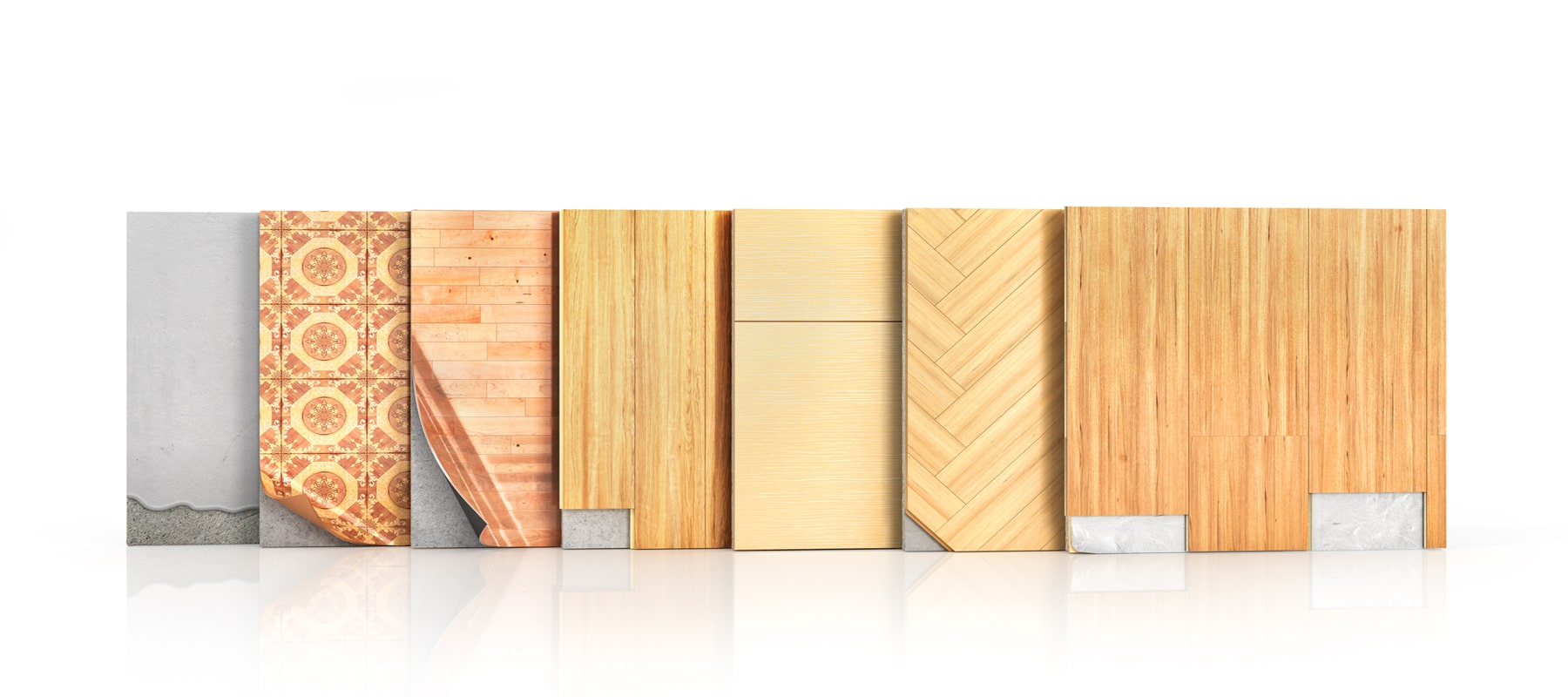How Much Does Oak Hardwood Flooring Cost?
Last Updated: January 14, 2022
On This Page
The affordability, durability, and wide availability of oak make it one of the most popular species for hardwood floors. Red and white oak offer slight differences in grain, color, and hardness, although both take stain well, making it easy to match them to your home's décor. In addition to these two distinct types of oak there are other options available to homeowners interested in oak flooring for their home, including reclaimed oak, engineered oak flooring, and oak laminate.
Types of Oak Flooring #
Solid Oak Flooring #
Included in this Flooring of oak floors are red and white oak as well as reclaimed (or antique) oak.
As their names denote, the main difference between red oak and white oak is color: the former has lighter, pinkish tones, while the latter tends to be darker, with hints of brown and yellow. These aren't the only differences, however, between the two species. Red oak typically has a more prominent grain pattern than white oak, while white oak (1360 on the Janka hardness scale) is slightly harder than red (1290 on the Janka scale).
An alternative to solid oak floors made from recently-harvested trees is oak flooring that's been salvaged from old barns, warehouses, and other buildings. So-called reclaimed flooring is not only a recycled product, but it also has character that newly-milled wood can't match. Made from old-growth trees, reclaimed lumber is denser and straighter than lumber that comes from younger trees. Reclaimed lumber may also contain imperfections such as nail holes that provide a unique touch and speak to the material's past. With antique flooring you get great-looking, quality wood as well as a piece of American history.
Engineered Oak Flooring #
Engineered flooring is constructed from multiple layers of wood and designed to be more stable than hardwood floors (that is, they don't expand and contract). The top layer of engineered oak flooring (the part you see) is made from real red or white oak, while the underlying layers are made of cheaper wood products. The stability of engineered wood flooring is attributable to the wood layers being laid crossways to each other. Another benefit of this type of flooring is that it can be installed as a floating floor (real hardwood must be nailed or glued to the subfloor).
Oak Laminate Flooring #
Like engineered flooring, laminate flooring is made of several layers. Unlike engineered flooring, the topmost layer of a laminate product is not made from real wood. The part of oak laminate floors that you actually see is a high-resolution printed image that resembles oak grain and is covered by a durable wear layer. At the core of laminate flooring is resin-coated fiberboard and the bottom layer is made from a moisture-resistant backing. This budget material does a pretty good job of imitating solid wood planks and it costs significantly less than the real thing.
Oak Hardwood Flooring Costs #
- Prices for red and white oak are more or less equivocal, although current market prices can cause one to be more expensive than the other at a given time. Expect to pay $3 to $9 per square foot for materials in addition to $2 to $4 per square foot for installation (or $5 to $13 per square foot total). For a 12 foot x 12 foot room, that's a total estimated cost of $700 to $1,800.
- Note that purchasing unfinished planks (those that require on-site sanding and finishing) is cheaper than buying boards that are prefinished in the factory. If you're willing to finish hardwood yourself, it's possible to save a good deal of money. Hiring a professional to do so, however, will incur additional labor charges that might offset any initial savings.
- The cost of engineered oak flooring depends largely on the quality of the product. While most can be installed for $4 to $8 per square foot, high-quality flooring with numerous layers can cost up to $10 to $15 or more per square foot installed ($1,400 to $2,200 for a 12 ft. x 12 ft. room)
- Oak laminate flooring is the cheapest option at approximately $4 to $8 per square foot installed ($600 to $1,100).
